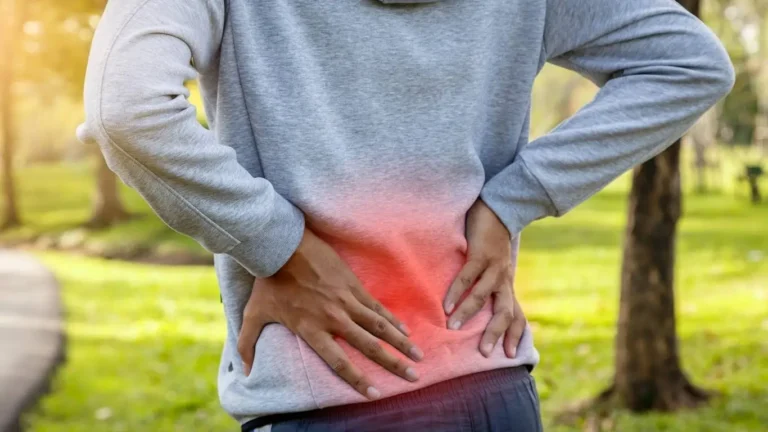GERD Symptoms You Should Never Ignore for Better Digestive Health
If you’ve ever felt a burning sensation creeping up your chest after a hearty meal, chances are you’ve brushed against the unpleasant world of GERD symptoms. I’ve worked as a medical assistant in a gastroenterology clinic for a good chunk of my career, and let me tell you—GERD (Gastroesophageal Reflux Disease) is one of the most common complaints we see. It’s sneaky, sometimes subtle, and often mistaken for everything from heartburn to anxiety. In this article, I’ll break down what GERD symptoms really look and feel like, with insights drawn straight from both medical experience and the countless patient stories I’ve heard firsthand.
What Exactly is GERD?

Let’s get the basics out of the way. GERD happens when stomach acid keeps slipping back (refluxing) into the esophagus—the tube that carries food from your mouth to your stomach. Normally, a ring of muscle at the bottom of the esophagus (called the lower esophageal sphincter) acts like a gate, closing after food passes through. But when that muscle relaxes too often or doesn’t close tight enough, acid escapes and wreaks havoc.
This isn’t just a minor annoyance. Repeated acid reflux can inflame the esophagus, lead to scarring, or even cause complications like Barrett’s esophagus, which can be precancerous. Not trying to scare anyone, but it’s important to take it seriously.
Common GERD Symptoms (And How They Really Feel)

1. Heartburn (But It’s Not What You Think)
When patients say “I have heartburn,” they’re usually describing a burning pain that starts behind the breastbone and might rise up to the throat. It often gets worse after eating or when lying down. Some folks confuse it with chest pain from the heart—and I’ve had more than one patient come in fearing a heart attack, only for it to be severe reflux.
Pro Tip: If the burning eases with antacids and shows up predictably after meals or at bedtime, GERD is likely the culprit. But always rule out heart issues first—better safe than sorry.
2. Regurgitation (Yep, It’s as Gross as It Sounds)
Regurgitation is when sour liquid or food actually comes back up into the throat or mouth. One of my patients once described it as “throwing up in slow motion without the drama.” It’s uncomfortable, can ruin your appetite, and sometimes even leads to coughing fits or a sore throat.
3. Chronic Cough and Throat Issues
This one always surprises people. GERD doesn’t always cause obvious heartburn. Sometimes, it shows up as a nagging dry cough, hoarseness, or the feeling of a lump in the throat (known as globus sensation). We call this “silent reflux” because the usual burning isn’t present—but the damage is still being done.
I remember a teacher who came in frustrated after months of losing her voice and clearing her throat constantly. Her ENT had ruled out allergies, and it turned out GERD was behind it all.
4. Trouble Swallowing (Dysphagia)
When GERD gets bad enough, the esophagus can become narrowed due to scarring, which makes it hard to swallow solid foods. People often describe the sensation as if food is “getting stuck.” This is a red flag and definitely warrants a visit to a gastroenterologist and possibly an upper endoscopy.
5. Nausea and Bloating
Not everyone with GERD feels the burn. Some feel bloated, nauseous, or uncomfortably full even after small meals. One patient told me she always felt like her food “just sat there.” Turns out, GERD was slowing her digestion and causing delayed stomach emptying (a condition called gastroparesis).
Less Common GERD Symptoms You Might Miss

Beyond the usual suspects, GERD has a few surprise symptoms that can make diagnosis tricky. Here are a few we see regularly in clinic:
- Bad breath (Halitosis): Chronic acid reflux can sour your breath and make brushing alone useless.
- Dental erosion: Stomach acid is tough on enamel. Dentists often spot GERD before doctors do.
- Worsening asthma: Acid reflux can irritate airways and trigger asthma attacks or chronic bronchitis-like symptoms.
- Ear pain: Referred pain due to nerve pathways connected to the throat and ears.
In my own clinical experience, I’ve seen GERD sneak up on people who had no idea reflux could cause all this. That’s why thorough questioning during intake is so crucial—sometimes it’s the tiniest clue (like “my voice is hoarse in the morning”) that leads to the right diagnosis.
When Are GERD Symptoms a Red Flag?
Here’s where I always tell patients to pause and really listen to their bodies. If you experience any of these, don’t ignore them:
- Unintentional weight loss
- Vomiting blood or having black, tarry stools
- Severe or persistent chest pain
- Trouble swallowing worsening over time
These could point to something more serious than standard reflux and require immediate attention. We usually recommend an upper endoscopy (EGD) in these cases to take a good look at what’s going on inside.
As someone who’s assisted during hundreds of EGDs and monitored countless reflux patients, I can’t stress enough the importance of catching GERD early. The sooner it’s diagnosed, the easier it is to manage before complications set in.
How GERD Symptoms Can Vary from Person to Person

One of the trickiest things about GERD symptoms is how differently they present across individuals. What feels like mild discomfort to one person might be completely debilitating to another. In my experience working in a gastro clinic, I’ve had patients in their 70s shrug off chronic reflux like it’s just part of aging, while younger patients in their 20s come in panicked over daily heartburn episodes.
For some, GERD is loud and obvious—burning chest pain, sour taste in the mouth, the whole nine yards. For others, it’s sneaky and subtle: maybe a dry throat in the morning, or food feeling like it takes a second longer to go down. And for folks with underlying conditions like diabetes or connective tissue disorders, the symptoms can overlap with other medical issues, making it harder to pin down.
Real talk: One patient I saw—mid-30s, active lifestyle—was shocked to learn that her “allergies” were actually reflux-related. She’d been battling post-nasal drip, a scratchy throat, and a constant need to clear her throat. After a trial of acid suppression and some lifestyle changes, boom—90% of her symptoms were gone in a few weeks.
Risk Factors That Can Make GERD Symptoms Worse

Let’s break down what tends to make GERD symptoms flare up. Trust me, this list gets longer the more patient charts I review, but some things show up again and again.
1. Diet and Eating Habits
This is a biggie. Certain foods weaken the lower esophageal sphincter or increase acid production. Here’s the usual lineup of troublemakers:
- Spicy foods (especially with chili or cayenne)
- Fatty or fried dishes
- Citrus fruits and juices
- Tomato-based sauces
- Chocolate (sorry, I know…)
- Caffeine and carbonated drinks
- Alcohol, especially wine and beer
It’s not always about avoiding everything on that list forever. The key is identifying your personal triggers. I always suggest patients keep a food and symptom diary for a week. You’d be surprised how often patterns jump out.
2. Eating Late at Night
We’ve all been guilty of this—eating dinner at 9:30 PM, then hopping into bed to watch Netflix. But lying down too soon after eating is a recipe for reflux. I tell patients to give their food 2-3 hours to digest before lying down flat. Gravity is your friend here.
3. Obesity and Abdominal Pressure
Extra weight, especially around the midsection, puts added pressure on the stomach. That pressure can push acid up into the esophagus more easily. Losing even 5-10% of body weight can make a noticeable difference in symptom relief. I’ve seen it happen over and over again, and patients are always amazed how quickly the burning improves once the scale starts shifting downward.
4. Smoking
Nicotine relaxes the esophageal sphincter and reduces saliva production (saliva helps neutralize acid, believe it or not). I had a patient who quit smoking for unrelated reasons and came back saying his GERD practically vanished. It’s not always that dramatic, but it’s a huge piece of the puzzle.
How GERD Symptoms Are Diagnosed

In clinic, diagnosis is often made based on symptoms alone—especially if they’re classic. But when things aren’t so straightforward, we bring in some tools. Here’s what the workup might look like:
- Trial of PPIs (Proton Pump Inhibitors): Doctors often prescribe medications like omeprazole or pantoprazole to see if symptoms improve. If they do, GERD is likely.
- Upper Endoscopy (EGD): We use a tiny camera to look at the esophagus, stomach, and upper intestines. It helps rule out ulcers, erosions, or Barrett’s esophagus.
- pH Monitoring: This involves placing a probe in the esophagus to measure acid levels over 24-48 hours. It’s especially helpful when symptoms are atypical.
- Esophageal Manometry: This test checks how well the esophagus moves and how the sphincters are functioning. We usually order this if someone is having trouble swallowing or prepping for surgery.
From my side of the exam table, I can tell you that most patients are surprised how easy these tests are. They’re safe, well-tolerated, and they give us a ton of insight. I’ve assisted with countless EGDs, and more often than not, patients walk out saying, “That wasn’t nearly as bad as I thought.”
Managing GERD Symptoms Without Meds
Medication definitely helps (and we’ll get to that), but lifestyle is the real MVP. Here are a few non-drug strategies I always recommend:
- Elevate the head of the bed: Use risers or a wedge pillow to keep your head 6-8 inches higher than your stomach while sleeping.
- Smaller, more frequent meals: Big meals stretch the stomach and increase reflux. Light, balanced meals are gentler on your system.
- Wear loose-fitting clothes: Tight waistbands or belts can squeeze your stomach and push acid upward.
- Mind your posture: Sitting upright after eating can really help. Avoid slouching on the couch or bending over right after a meal.
One of my patients bought a wedge pillow off Amazon after I suggested it—she came back saying it was the “best $35 she ever spent.” Little tweaks like that go a long way, and they’re often the missing link for folks stuck in the cycle of symptom-meds-symptom.
When Medication Becomes Necessary
Despite our best efforts with lifestyle changes, sometimes meds are essential. The most common ones include:
- Antacids: Quick relief for occasional symptoms (TUMS, Rolaids).
- H2 blockers: Like ranitidine or famotidine. These reduce acid production and are good for mild to moderate symptoms.
- PPIs: Stronger acid blockers like omeprazole, lansoprazole, or esomeprazole. They’re the go-to for moderate to severe GERD and help heal esophagitis.
Important note from the clinic frontlines: These meds work best when taken correctly. For example, PPIs should be taken on an empty stomach, about 30-60 minutes before breakfast. I can’t tell you how often folks miss that step and wonder why they’re not getting relief. The timing really matters.
What Happens If GERD Symptoms Are Left Untreated?

Here’s the honest truth—mild or occasional GERD might not cause much harm at first, but chronic untreated reflux can lead to some serious complications over time. I’ve seen firsthand how letting symptoms slide can lead to bigger issues down the road. It’s not to scare you, but just to emphasize why early management really matters.
1. Esophagitis
This is inflammation of the esophagus from repeated acid exposure. It can cause pain, ulcers, and sometimes bleeding. I’ve assisted with endoscopies where we see the lining of the esophagus raw and red—it’s uncomfortable, and unfortunately, pretty common when GERD is ignored.
2. Strictures
When the esophagus heals from acid damage, it can scar and narrow. This leads to trouble swallowing, or that sensation of food getting “stuck.” We’ve had to schedule dilation procedures for folks who couldn’t even get through a bowl of pasta without discomfort.
3. Barrett’s Esophagus
Barrett’s is a condition where the lining of the esophagus changes due to repeated exposure to stomach acid. It raises the risk of esophageal cancer. Now, this doesn’t happen to everyone with GERD, but it’s something we screen for if someone’s had symptoms for many years—especially men over 50 or patients with obesity and a history of smoking.
When GERD Requires More Than Meds

For most people, GERD is totally manageable with lifestyle changes and medication. But in some cases, symptoms persist despite everything—or folks just don’t want to take medication long-term. That’s where surgical or advanced options come into play.
1. Nissen Fundoplication
This is the classic anti-reflux surgery. The top part of the stomach is wrapped around the lower esophagus to strengthen the valve and stop acid from rising. It sounds intense, but it’s done laparoscopically (minimally invasive) in most cases, and recovery is faster than people expect.
I’ve seen plenty of patients go from daily PPIs and miserable symptoms to completely symptom-free after this procedure. It’s not for everyone, but when it works—it really works.
2. LINX Device
The LINX system is a newer, less invasive option where a ring of magnetic beads is implanted around the esophagus. It opens for swallowing but stays closed otherwise, preventing acid from backing up. Several of our patients have gone this route with fantastic results—and minimal downtime.
Of course, surgery is never a first-line option, and thorough testing (like pH monitoring and manometry) is essential before considering it. But for those who qualify, it can be life-changing.
Natural Approaches to Easing GERD Symptoms
Now, as a Medical Assistant, I always lean into evidence-based medicine first—but that doesn’t mean we can’t pair it with more natural, gentle remedies. I’ve had so many patients ask about this, and the truth is, for mild symptoms, certain home strategies really can make a difference.
- Ginger tea: A warm, soothing option that can reduce inflammation and calm the stomach. Just avoid adding lemon!
- Chewing gum: Stimulates saliva production, which can neutralize acid in the esophagus. Go for sugar-free gum, preferably with xylitol.
- Aloe vera juice: In small amounts (and food-grade only), aloe can help coat the esophagus and soothe irritation. But always consult your doctor—some aloe can act as a laxative.
- Slippery elm or marshmallow root: These herbs are believed to create a mucous-like barrier in the esophagus. You’ll find them in natural food stores, often as lozenges or powders.
I always tell folks—natural remedies can be supportive, but they’re not substitutes for medical care when symptoms are persistent or severe. And please, always loop your healthcare provider in before starting anything new, even if it’s “natural.”
Living with GERD: My Final Thoughts from the Clinic
Living with GERD doesn’t have to mean constant discomfort or a drawer full of antacids. With the right blend of awareness, daily choices, and support from your healthcare team, you can absolutely stay ahead of your symptoms.
I’ve worked with hundreds of patients who came in frustrated, overwhelmed, or scared—and walked away empowered. It’s about understanding what your body is telling you, being kind to your digestive system, and making small, steady shifts that add up over time.
So whether you’re just starting to notice symptoms or you’ve been battling reflux for years, know that relief is possible. And if you ever find yourself stuck or unsure, don’t hesitate to talk to a gastroenterologist—you deserve to feel good in your own body again.
References
Disclaimer
This article is intended for informational purposes only and is based on my personal experience as a Medical Assistant in a gastroenterology clinic, as well as current medical guidelines. It is not a substitute for professional medical advice, diagnosis, or treatment. Always seek the advice of your physician or qualified health provider with any questions you may have regarding a medical condition.

Camellia Wulansari is a dedicated Medical Assistant at a local clinic and a passionate health writer at Healthusias.com. With years of hands-on experience in patient care and a deep interest in preventive medicine, she bridges the gap between clinical knowledge and accessible health information. Camellia specializes in writing about digestive health, chronic conditions like GERD and hypertension, respiratory issues, and autoimmune diseases, aiming to empower readers with practical, easy-to-understand insights. When she’s not assisting patients or writing, you’ll find her enjoying quiet mornings with coffee and a medical journal in hand—or jamming to her favorite metal band, Lamb of God.






